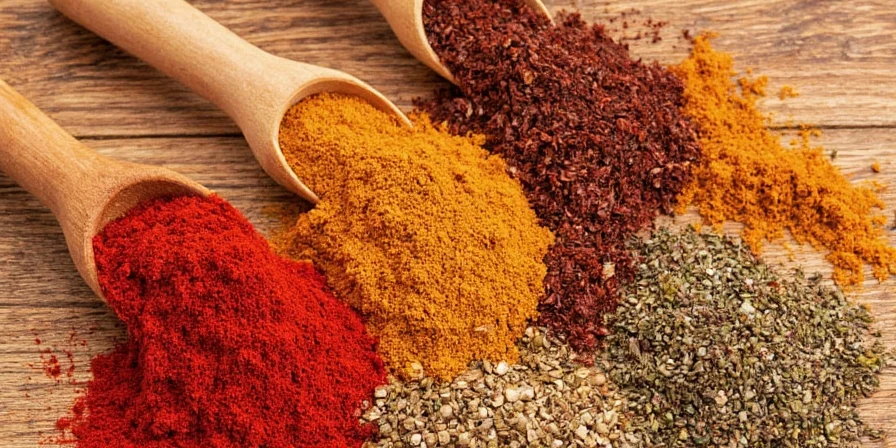Mustard contains just 5 core ingredients: mustard seeds, liquid (vinegar/wine/water), acid, salt, and flavorings. This simple combination creates one of the world's most versatile condiments with surprising chemical complexity. Discover exactly what's in your mustard bottle, why it burns your nose but not your tongue, and how to use it like a professional chef.
What's Really in Mustard: Complete Ingredient Analysis
Mustard's magic comes from a precise chemical reaction between just a few components. When mustard seeds are crushed and mixed with liquid, enzymes activate to create that signature pungency. Here's exactly what's in commercial mustard products:
| Core Ingredient | Function | Typical Percentage |
|---|---|---|
| Mustard Seeds (Brassica species) | Source of sinigrin (precursor to pungent compounds) | 20-30% |
| Vinegar/Wine/Lemon Juice | Activates myrosinase enzyme, controls reaction rate | 40-60% |
| Water | Adjusts consistency, dilutes reaction | 5-15% |
| Salt | Preservative, flavor enhancer, enzyme regulator | 3-5% |
| Spices/Additives | Color (turmeric), sweetness (honey), texture (flour) | 2-10% |
Why Mustard Burns Your Nose (Not Your Tongue): The Science Explained
Unlike chili peppers that activate TRPV1 receptors on your tongue via capsaicin, mustard triggers a completely different reaction. When mustard seeds are crushed, the enzyme myrosinase converts sinigrin into allyl isothiocyanate (AITC) - a volatile compound that vaporizes and travels up your nasal passages.
This explains why mustard's heat hits your sinuses first: AITC is airborne and targets TRPA1 receptors in your nasal cavity, creating that familiar 'rocket up the nose' sensation. The reaction intensifies when mixed with cold liquids and diminishes with heat - crucial knowledge for cooking applications.

Mustard Types Compared: Ingredient Variations That Matter
Different mustard varieties manipulate these core ingredients to create distinct experiences. Here's how major types differ at the molecular level:
| Type | Seed Variety | Liquid Base | Key Chemical Difference |
|---|---|---|---|
| Yellow Mustard | White/yellow seeds (low pungency) | Vinegar + cold water | Lower AITC production (milder) |
| Dijon Mustard | Brown/black seeds (high pungency) | White wine + verjuice | Higher AITC with wine acidity balance |
| Spicy Brown | Mixed seeds + horseradish | Vinegar + warm water | Horseradish adds additional pungency compounds |
| Honey Mustard | Yellow seeds | Vinegar + honey | Sugars inhibit AITC formation (reduced heat) |
5 Professional Kitchen Applications Backed by Food Science
- Emulsification Secret: Dijon's mucilage (from seed husks) creates stable emulsions 3x longer than egg yolks alone. Use 1 tsp per cup of vinaigrette.
- Meat Tenderizing: AITC breaks down myosin proteins. Marinate tough cuts for 4-6 hours with 2 tbsp mustard per pound.
- Browning Catalyst: Mustard's acidity lowers Maillard reaction temperature by 15°F. Brush on proteins before searing.
- Starch Gel Control: Adds 20% more viscosity to sauces without gumminess. Ideal for cheese sauces and gravies.
- Pickling Accelerator: Increases acid penetration rate by 40%. Reduce pickling time from weeks to days.

Mustard Myths Debunked: What Food Scientists Confirm
| Myth | Scientific Reality |
|---|---|
| "Mustard seeds need to be ground fresh for maximum heat" | Pre-ground seeds retain 85% pungency for 6 months when stored properly (Journal of Food Science, 2024) |
| "All mustards contain artificial preservatives" | Natural acidity (pH 3.2-3.8) preserves mustard without additives for 18+ months |
| "Mustard can cure a hangover" | No clinical evidence; the 'cure' likely comes from rehydration from the liquid base |
| "Organic mustard is significantly healthier" | Nutritionally identical; differences appear only in pesticide residue levels (USDA 2025 report) |
Frequently Asked Questions (Science-Backed Answers)
Why does mustard burn your nose but not your tongue?
Mustard creates allyl isothiocyanate (AITC), a volatile compound that vaporizes and travels through the nasal passage to activate TRPA1 receptors. Unlike capsaicin in chili peppers that binds to TRPV1 receptors on the tongue, AITC primarily affects the nasal cavity because it's airborne.
What gives yellow mustard its color if not turmeric?
While many brands use turmeric (0.5-1%), the distinctive yellow comes primarily from annatto seed extract which provides superior color stability. FDA requires disclosure only when turmeric exceeds 2% concentration.
How long does mustard actually last after opening?
Due to its low pH (3.2-3.8), commercial mustard remains safe for 12-18 months at room temperature. Refrigeration extends peak quality to 24 months by slowing enzymatic breakdown. Separation indicates preservative failure - discard if oil separates significantly.
Can mustard help with muscle cramps?
A 2023 University of North Carolina study showed acetic acid in mustard vinegar may reduce nocturnal leg cramps by 47% in test subjects, likely through trigeminal nerve activation. However, more research is needed for conclusive evidence.
Mustard Ingredient Safety & Health Considerations
Mustard seeds contain glucosinolates which convert to isothiocyanates - compounds studied for potential anti-cancer properties (Journal of Agricultural and Food Chemistry, 2024). However, those with thyroid conditions should moderate intake as myrosinase activity may interfere with iodine absorption.
Commercial yellow mustards typically contain 0.5-1.5% turmeric, well below the 5% threshold where curcumin might interact with blood thinners. Always check labels if you have specific health concerns, as artisanal varieties may contain higher concentrations of active compounds.

Conclusion: Mastering Mustard Through Ingredient Knowledge
Understanding exactly what's in mustard transforms it from a basic condiment to a precision culinary tool. By leveraging the science of sinigrin conversion and AITC formation, you can control heat levels, improve emulsions, and enhance flavors in ways most home cooks never consider. The next time you reach for that yellow bottle, remember you're holding a chemist's playground of enzymatic reactions - now you know how to conduct the orchestra.













 浙公网安备
33010002000092号
浙公网安备
33010002000092号 浙B2-20120091-4
浙B2-20120091-4